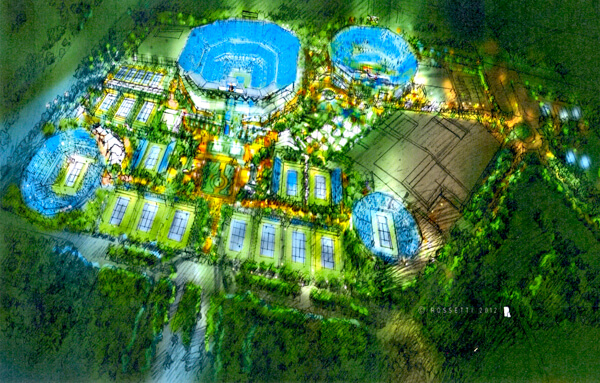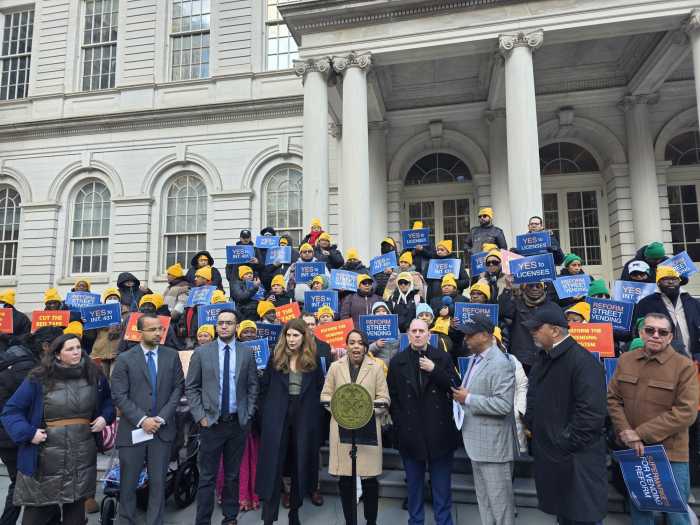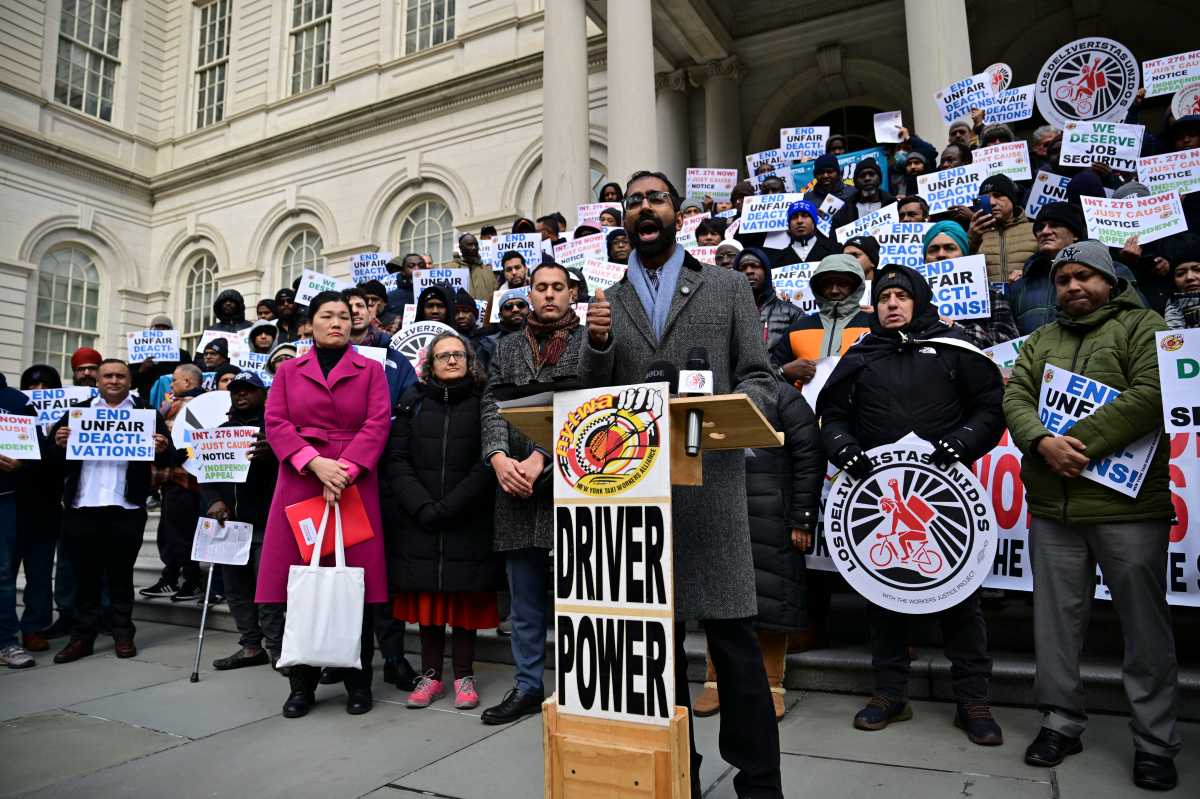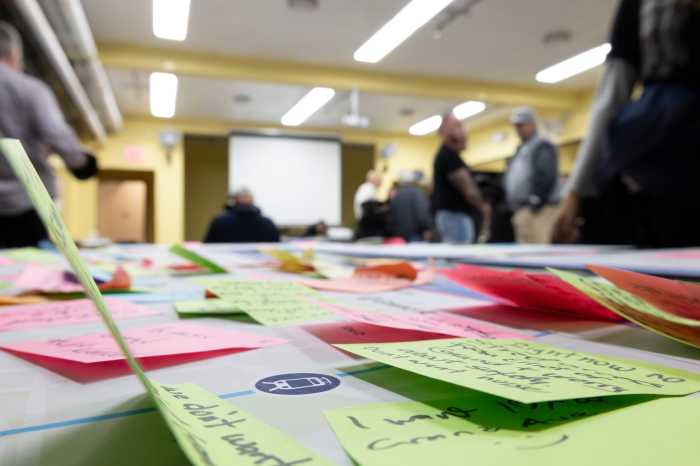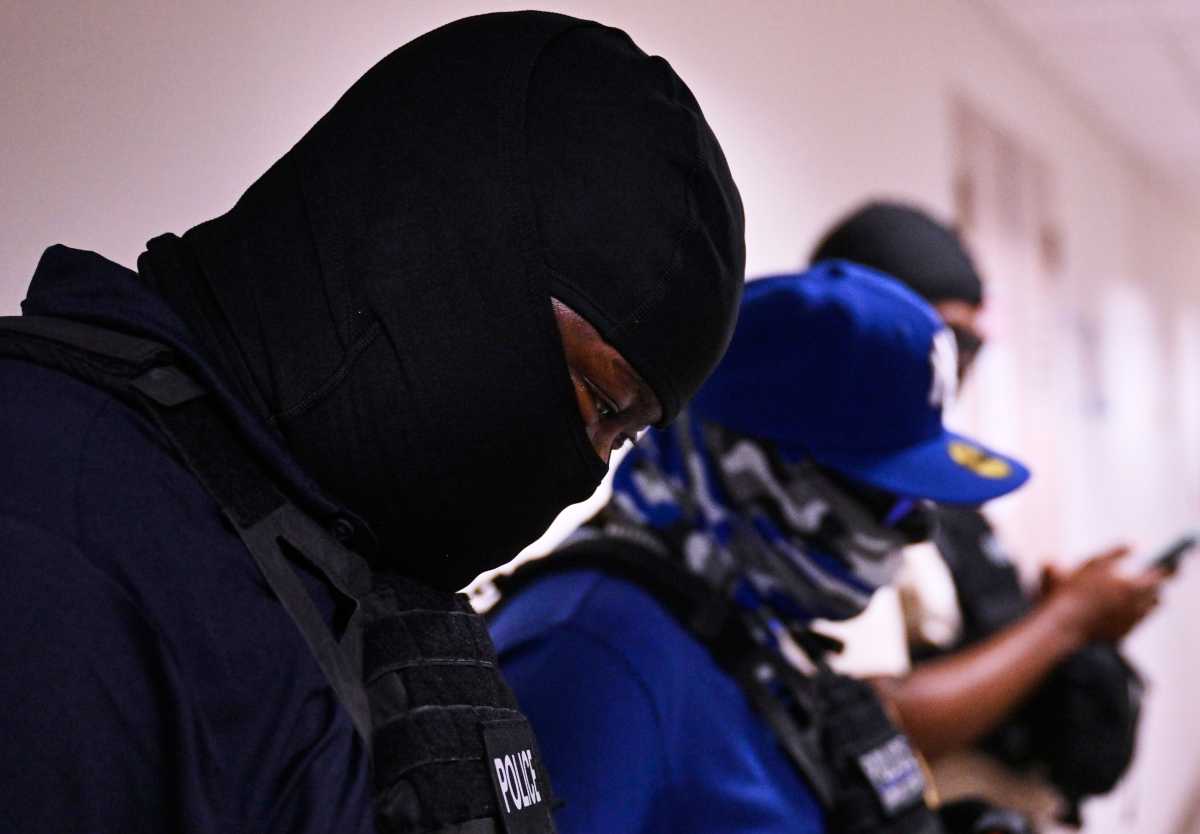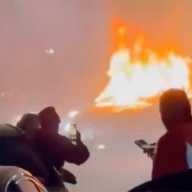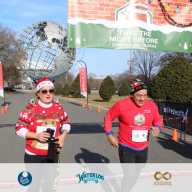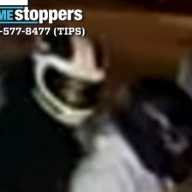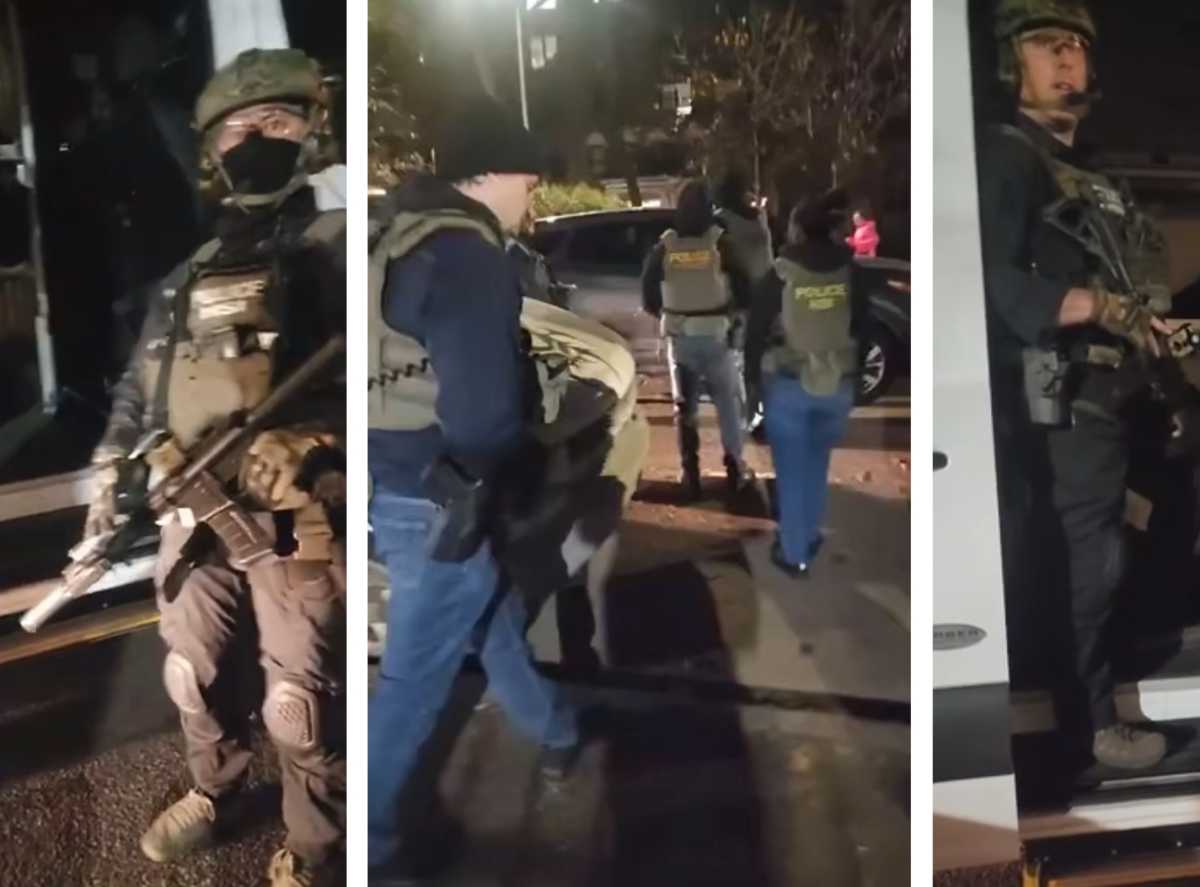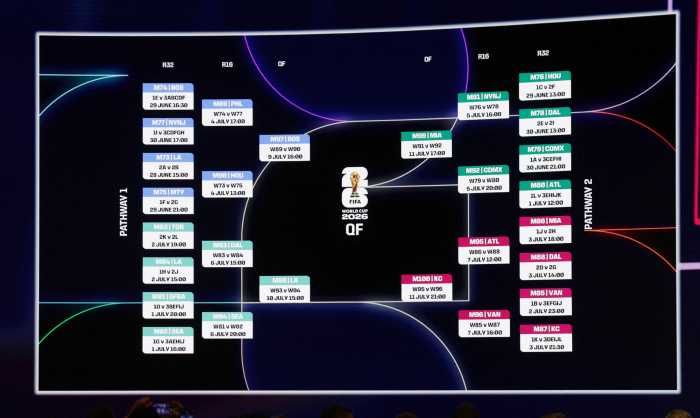By Joe Anuta
Grass parking allocated for the US Open in Flushing Meadows Corona Park is twice the space cited by representatives from the city Parks Department and the United States Tennis Association at a City Council hearing last week.
Dorothy Lewandowski, Queens Parks commissioner, and Gordon Smith, the USTA’s executive director and chief operating officer, testified before the Council’s Subcommittee on Planning Dispositions and Concessions June 20 as part of the association’s bid to take 0.68 acres of the park for renovations.
Much of the discussion centered around the association’s practice of letting cars park on greenspace during the US Open.
“Parking on the grass is a very big issue in our community,” said Councilwoman Julissa Ferreras (D-East Elmhurst), who was trying to find out how much land was being used for this purpose. “It shouldn’t be an option.”
But Lewandowski and the USTA’s answers differed from the information in a 400-page document called an environmental impact statement the USTA already had submitted to the city.
For example, Lewandowski testified that two grass lots are used by the association for staff, broadcasters and suite holders. According to the impact statement, these lots hold 450 cars.
But she did not mention that another 300-capacity lot is also used for the same purpose.
Parks said the commissioner was testifying only about lots under Parks control, since the third lot is under the purview of the Hall of Science. But the lawmakers, who will help decide whether the USTA’s plan will go forward, never heard about the third during the rest of the hearing.
As opposed to USTA staff, fans typically park at Citi Field — and pay the Mets to do so. But on days when the Amazin’s have a home game, a handful of times each year, the NYPD redirects drivers to areas in Flushing Meadows.
A traffic engineer from AKRF, a consulting firm that drafted the environmental impact statement for the USTA expansion, testified that two grass areas with a capacity of between 600 to 1,000 cars were used on home game days in addition to a paved lot.
But the impact statement shows that after those lots are filled, three other grassy lots with a capacity of 1,300 cars are used “less frequently,” but are also available.
USTA later said the engineer’s testimony was correct and that the two grassy lots are never maxed out, and none of the additional lots identified in the statement are used.
Patrons pay to park on the grass during home game days with the Mets, but when Lewandowski was asked where the fees go, she initially said the city.
When Ferreras then asked for a clarification — “Citi Field or the city?” — the parks commissioner then said it was a combination and subsequently settled on the Mets.
Parks later clarified that if parking revenues exceed a certain threshold, which they have in the past, the Mets split the money with the city.
There were other inconsistencies between the statement and the testimony.
The USTA’s Smith said a maximum of between 30,000 and 35,000 people attended the US Open on any given day. But the average weekday ticket sales during the first week of the open in 2011 was 46,562, according to the impact statement. On the first weekend, that number jumped to 53,228.
The association later clarified that Smith was talking only about the day session attendance, which can differ from ticket sales, and omitted the night session attendance.
The USTA’s proposal now heads to a City Council subcommittee vote and then to the full Council vote, which is expected sometime in July.
Reach reporter Joe Anuta by e-mail at januta@cnglocal.com or by phone at 718-260-4566.


